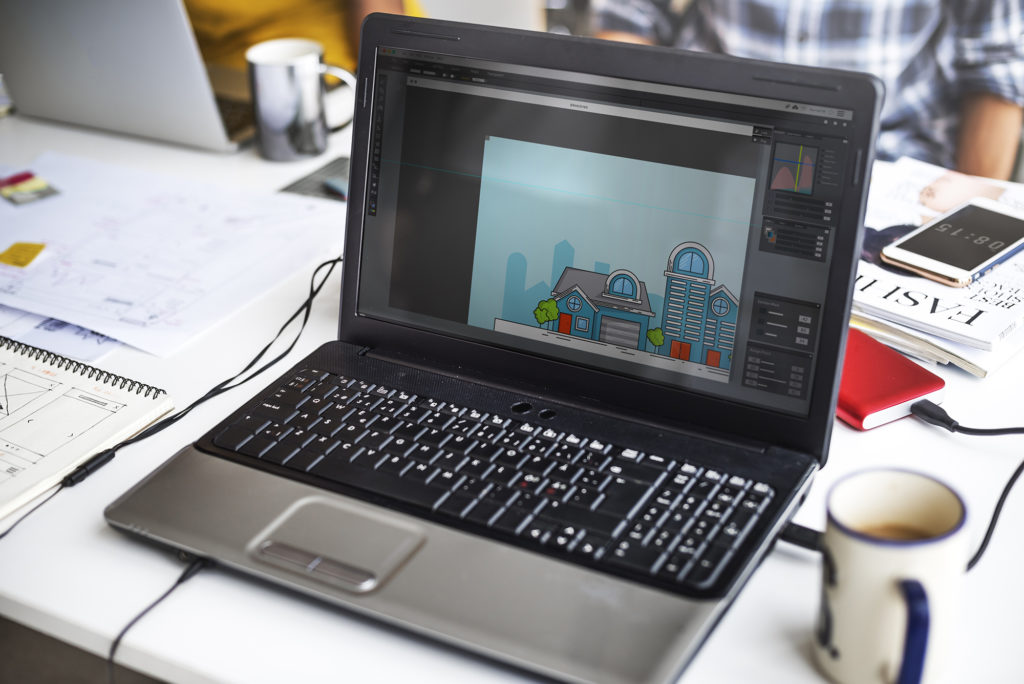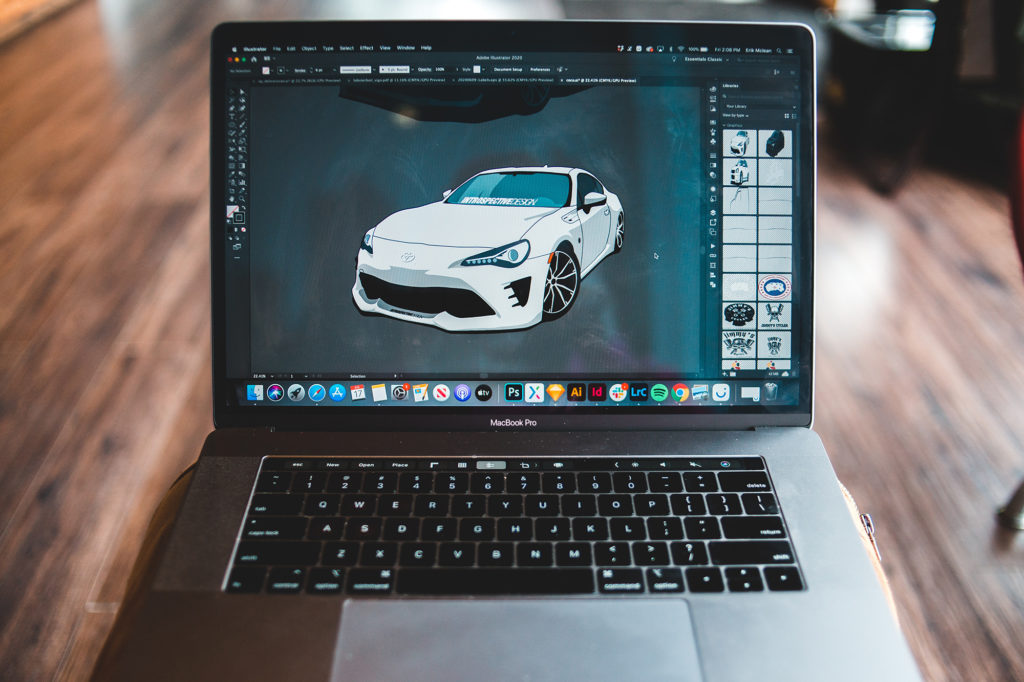The immediate goal of any website is to catch users’ attention. Visitors stay for an average of just 15 seconds. If you don’t pique their interest within that time, they’ll bounce right off.
One of the easiest ways to boost dwell time is to add relevant images. More than decoration, images have the power to communicate complex messages in an instant. The right photos reel people in by telling a story, serving as navigation cues, and adding a human touch to an otherwise lone digital experience.

Unfortunately, images are also the main culprits of slow site speed. Big photos and complex file formats eat a ton of bandwidth. Additionally, too many images overload the server and delay other elements on the web page from loading.
These problems are solved through image optimization. Specifying image dimensions, enabling a caching plugin, and uploading photos in the right format help websites run faster and smoother.
Next-gen images are great advancements in the field. Developed with incredible specs, they’ve risen in popularity as advanced alternatives to traditional image formats.
Types of Image Formats
To better understand next-gen images, you need a good grasp of how it compares to other file formats like the following:
JPEG
Joint Photographic Experts Group. One of the go-to image formats for uploading photographs on the web. It is supported by all browsers and operating systems, making it an excellent choice for blog posts and product pages.
You should, however, avoid this format for infographics. JPEGs are subject to lossy compression, meaning the quality of photos is diminished with reduced file size.
PNG
Portable Network Graphics. Like JPEGs, it is supported by virtually all web browsers and operating systems. Unlike the previous file type, it is built with lossless compression and allows full alpha channel transparency.
This format is commonly used for visuals that present both images and text like infographics, coupons, and banners. It also makes it easier to move images from one background to another.
Overusing PNGs leads to problems in site speed because of large file sizes reaching up to several megabytes.
GIF
Graphics Interchange Format. Another raster format that is capable of lossless compression, supported by major browsers and operating systems, and permits variable transparency. Limits an image uploaded to 8 bits per pixel and a 256 color palette. GIFs are used for animated captures and boast small file sizes.
SVG
Scalable Vector Graphics. The preferred file format for illustrations, shapes, and text because of loss-free scaling and support for transparent backgrounds. SVGs are best used for logos, icons, and other graphics that appear in responsive web design.

This image format also maintains a small file size but is not suitable for complex images and drawings.
EPS
Encapsulated Postscript. Used primarily to store illustrations created in Adobe Illustrator and other software. EPS images rely on code to outline shapes and drawings similar to SVG. As such, it also enjoys lossless scaling.
HEIF
High Efficiency Image File Format. A raster image format designed with the intent to be a direct competitor to JPEG. When compressed, HEIFs theoretically outperform JPEGs in terms of image quality for the same file size.
HEIFs are adopted by new smartphones but are currently not supported by major browsers and operating systems.
Portable Document Format. A popular choice for magazine covers, ebooks, and print materials. PDFs are equipped with lossless scalability, interactive features, and searchable text. Unfortunately, they cannot be displayed as-is on websites but rather downloaded or loaded separately in a new tab.
PSD
Photoshop Document. A file type used to save projects and works in progress in Adobe Photoshop. PSD files are typically large and are only meant for storage.
AI
Adobe Illustrator Artwork. Another file type used to save illustration projects. Differs from PSD files in that it supports lossless scaling.
RAW
The RAW image format is a file type used by digital cameras to store photos in full quality. RAW files support 16,384 shades per color channel (14bit), thereby taking on a large file size of at least 20 to 40 megabytes. RAW images are for storage until post-processing and are not meant for web use or print.

What are Next-Gen Formats?
Next-gen images are modern-day solutions to image optimization. With the web evolving, plus consumers leaning towards picture-based information, next-gen images serve as advanced options to satisfy users’ needs
Next-gen images are defined by their superior quality to file size ratio. The three most popular next-gen image formats are:
JPEG 2000
JPEG 2000 uses structured XML to retain crucial information like metadata after compression. It also does an incredible job of preserving high dynamic range and color spaces without losses.
JPEG 2000 can go for lower file sizes with better image clarity versus traditional JPEGs. Unfortunately, only Safari supports JPEG 2000 as of writing.
JPEG XR
Apart from efficient compression techniques, JPEG XR features wide support for multiple color formats like monochrome, CMYK, RGB, and others. JPEG XR is dubbed the practical version of JPEG 2000 because of its low-complexity encoding and decoding requirements.
It is the standard format for HDR images and supports 16-bit images and up. The catch is, JPEG XR is available only to users on Firefox and Safari.
WebP
WebP is a next-gen image format made with web use in mind. As such, it has better browser and OS support compared to the previous next-gen images discussed. It’s a great alternative to JPGs, PNGs, and GIFs with lossy and lossless compression plus animation support.
WebP is ready to use in Google Chrome, Firefox, Edge, and Opera. Safari will soon follow upon releasing Safari version 14.
Advantages of Next-Gen Images
Next-gen images are overtaking traditional image formats in web use for good reasons. These modern file types can be up to three times smaller in size while maintaining impeccable visual clarity and richness of color.
WebPs are up to 35% smaller than JPEG images. Opting for WebPs saves disk space and bandwidth considerably, resulting in faster load times.

Also, swapping JPEGs and PNGs for WebPs isn’t as tedious as you’d think. You can convert any photo in those file formats to WebP using the precompiled cwebp conversion tool.
Other advantages of next-gen images include:
- Improved search engine optimization (SEO)
- Better accessibility
- Enhanced user experience
- More room for images
Final Points
Next-gen images greatly improve site speed and overall website performance. Although they have limitations, there are ways to circumvent them.
For example, there are development tools that automatically detect users’ web browsers and serve the appropriate image format. This allows you to maximize the benefits of next-gen images as early as now while technology catches up to widen browser and OS support.
Still, next-gen images are just one part of the solution. A good web designer knows when to add and omit images, is careful to choose the right ones, and publishes them only when they add value to the user experience.
Work with a Team of Professional Web Developers and Designers
Get a website that converts when you work with seasoned web developers and designers. With years of experience, we know the ins and outs of web development and design. Contact DevWerkz today to learn more about our services.